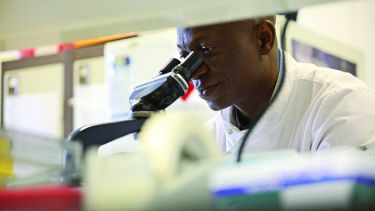- A team of scientists and students from the University of Sheffield has published the blueprints for a specialist single-molecule microscope they built for a tenth of the cost of commercially available equipment
- Their paper in Nature Communications provides labs with the build instructions and software needed to run the microscope
- The single-molecule method this microscope is capable of is currently only available in a few specialist labs throughout the world
A team of scientists and students from the University of Sheffield has designed and built a specialist microscope, and shared the build instructions to help make this equipment available to many labs across the world.
The microscope, called the smfBox, is capable of single-molecule measurements allowing scientists to look at one molecule at a time rather than generating an average result from bulk samples and works just as well as commercially available instruments.
This single-molecule method is currently only available at a few specialist labs throughout the world due to the cost of commercially available microscopes.
Today (6 November 2020), the team has published a paper in the journal Nature Communications, which provides all the build instructions and software needed to run the microscope, to help make this single-molecule method accessible to labs across the world.
This work takes what was a very expensive, specialist piece of kit, and gives every lab the blueprint and software to build it for themselves, at a fraction of the cost.
Dr Tim Craggs
Lecturer in Biological Chemistry at the University of Sheffield, and the lead academic on the project
The interdisciplinary team spanning the University of Sheffield’s Departments of Chemistry and Physics, and the Science and Technology Facilities Council’s Central Laser Facility, spent a relatively modest £40,000 to build a piece of kit that would normally cost around £400,000 to buy.
The microscope was built with simplicity in mind so that researchers interested in biological problems can use it with little training, and the lasers have been shielded in such a way that it can be used in normal lighting conditions, and is no more dangerous than a CD player.
Dr Tim Craggs, the lead academic on the project from the University of Sheffield, said: “We wanted to democratise single-use molecule measurements to make this method available for many labs, not just a few labs throughout the world. This work takes what was a very expensive, specialist piece of kit, and gives every lab the blueprint and software to build it for themselves, at a fraction of the cost.
“Many medical diagnostics are moving towards increased sensitivity, and there is nothing more sensitive than detecting single molecules. In fact, many new COVID tests currently under development work at this level. This instrument is a good starting point for further development towards new medical diagnostics.”
The original smfBox was built by a team of academics and undergraduate students at the University of Sheffield.
Ben Ambrose, the PhD lead on the project, said: “This project was an excellent opportunity to work with researchers at all levels, from undergraduates to scientists in national facilities. Between biophysicists and engineers, we have created a new and accessible platform to do some cutting edge science without breaking the bank. We are already starting to do some great work with this microscope ourselves, but I am excited to see what it will do in the hands of other labs who have already begun to build their own.”
The Craggs Lab at the University of Sheffield has already used the smfBox in its research to investigate fundamental biological processes, such as DNA damage detection, where improved understanding in this field could lead to better therapies for diseases including cancer.
Contact
For further information please contact:

